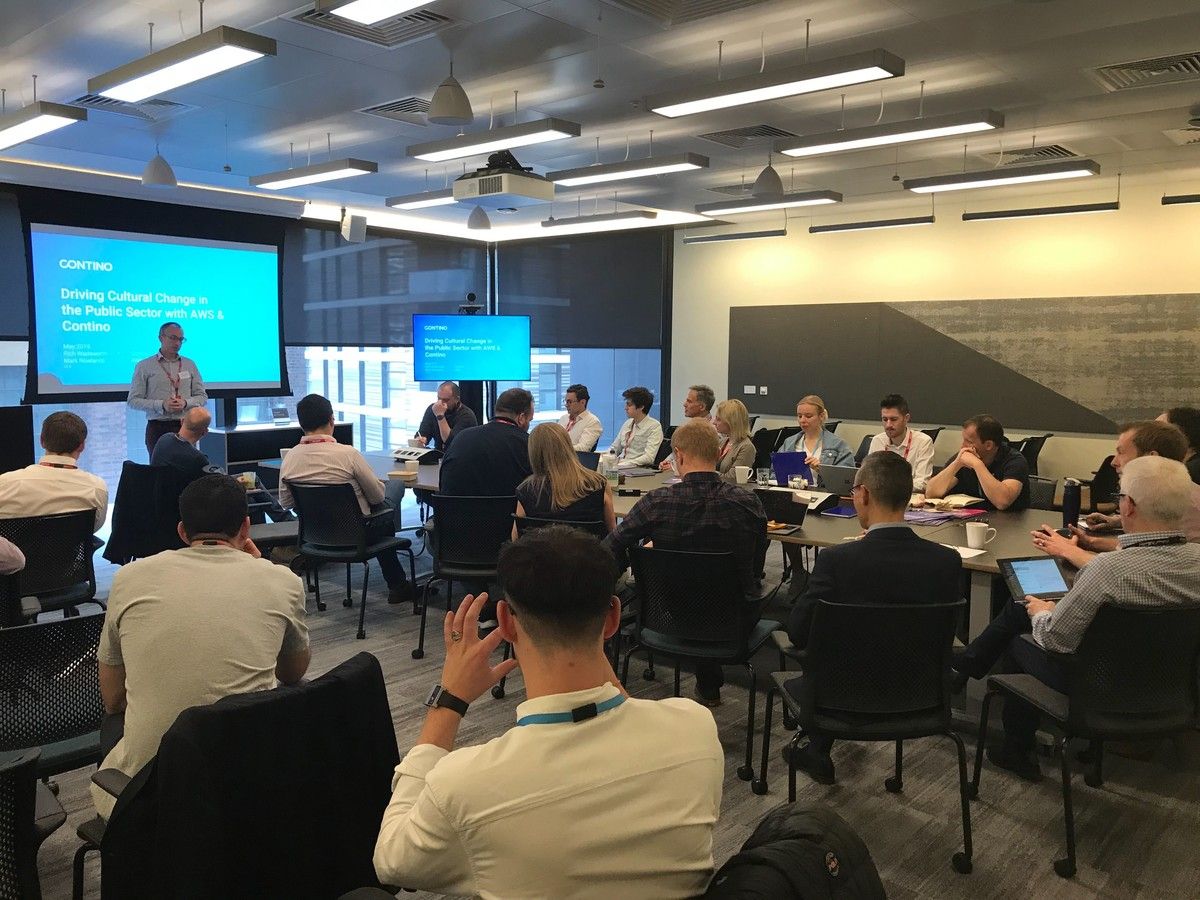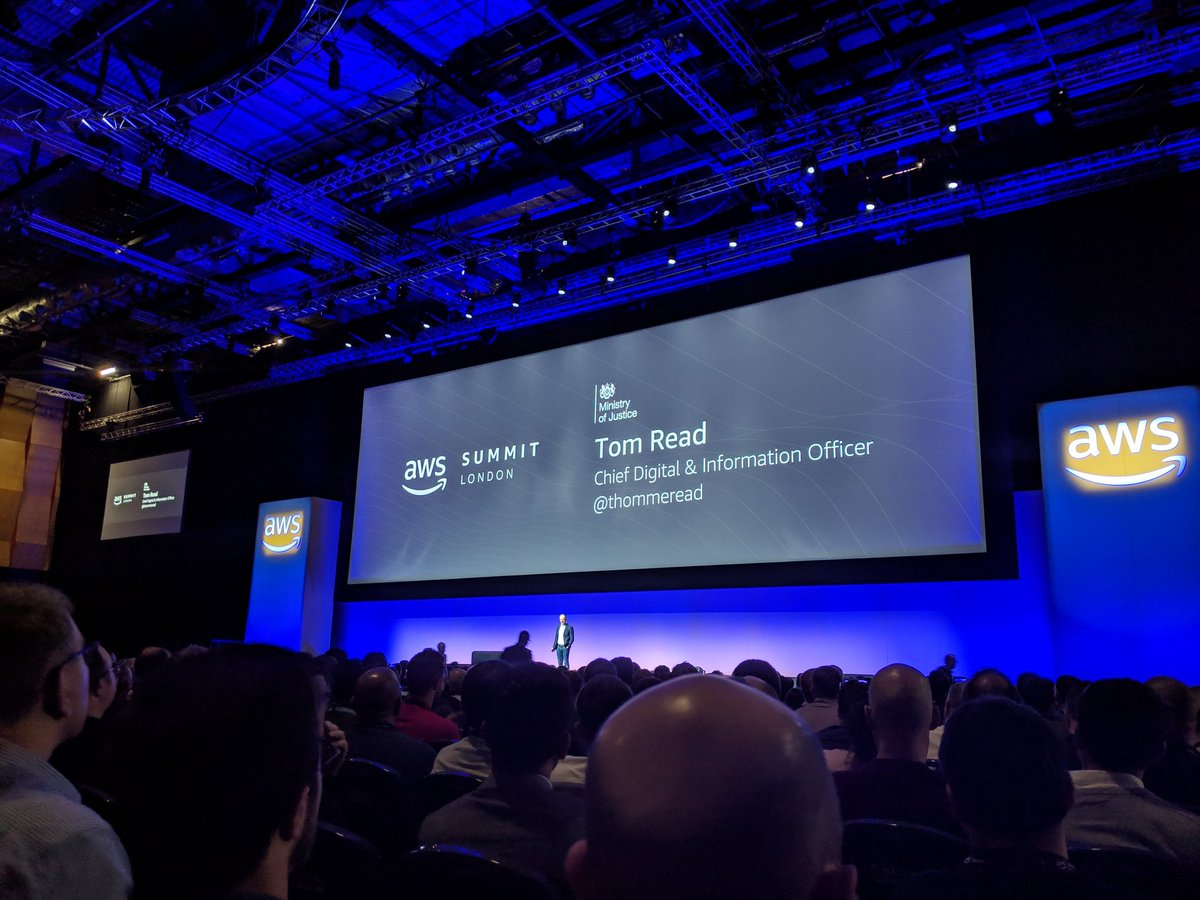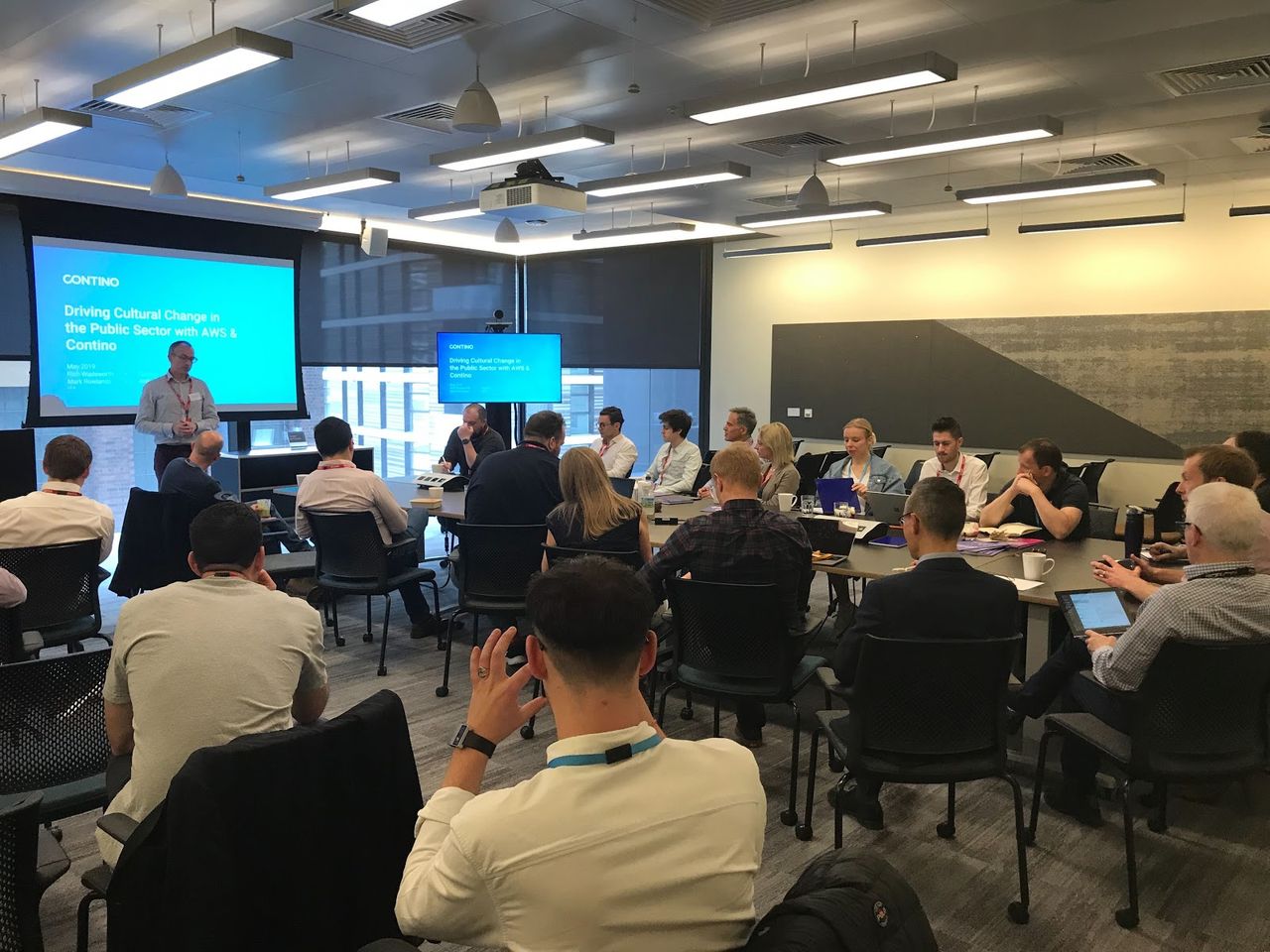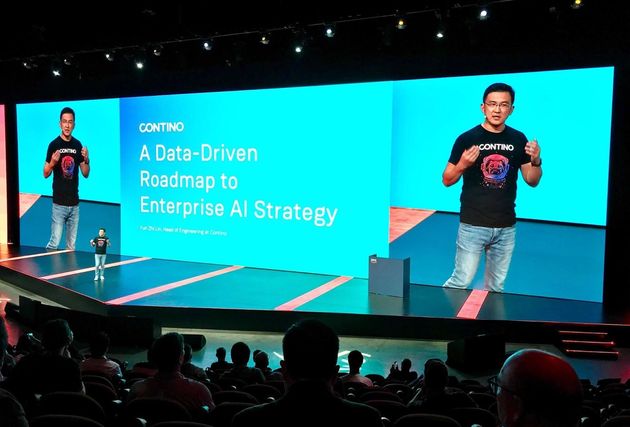Driving Cultural Change in the Public Sector
“Changing the way services are delivered in any sector is hard. In the public sector it’s very hard. Policy, compliance and the services which deliver those policy frameworks are complex however they are not complicated. We need to build platforms and capabilities to work through the complicated quickly and tackle complexity”.
Richard Wadsworth, VP Delivery Operations, Contino
On the morning of May 23rd, Contino and AWS got together at Amazon’s Principal Place offices to host a breakfast briefing event about the challenges in public sector IT.
The event explored how departments are using DevOps and cloud native principles to drive demonstrable cultural change, the discussions being chaired by Contino’s VP of Delivery Operations, Richard Wadsworth, and AWS’ Mark Rowlands, Head of Pan-EU Public Sector Solutions Architecture.
AWS in the Public Sector
Referencing AWS’ work with public sector organisations globally such as the EU, NATO, the CIA and many others, Mark Rowlands described how AWS helps simplify systems through the provisioning of transparent, highly automated processes and managed services and how those offerings have changed and grown over time to address the changing needs of public sector organisations.
One of the early UK use cases cited was that of Transport for London – who initially engaged with AWS to help address the problem they experienced in scaling their on-premises infrastructure when faced with external challenges such as Snow Days.
As time has gone on, the case for cloud and AWS’ relationship with public sector organisations has matured to true strategic partnerships. A case in point is the UK’s Ministry of Justice full commitment to a cloud-first approach to service delivery. Their Chief Digital & Transformation Officer took to the stage at the AWS London Summit earlier in May to talk about their strategic relationship, and sharing some detail on how the ministry moved some of their most important operational and client facing services to the AWS public cloud.
(Image from @daverog on Twitter)
Challenges in Public Sector Technology
Contino’s Richard Wadsworth provided examples of the types of challenges that public sector organisations typically face, and that represent the basis of their need to change ranging from siloed organisational structures with dependencies across teams, slow cycle times from idea to production implementation and critically significant capability gaps across teams and challenges in building the required skills within departments.
Richard Wadsworth went on to illustrate the difference between those problems that are complicated (hard to solve, but addressable with rules, systems and processes, like the hierarchical structure that most companies use to command and control employees) and those that are complex (involving many unknown and/or interrelated factors).
Core DevOps principles such as a focus on automation and immutability, feedback loops and monitoring and looking at achieving the most efficient route from idea to live all enable the delivery environment. AWS furthers this by creating the guardrails and controls to allow services to be created and consumed in secure, compliant environments. This reduces the complicated elements and allows teams to focus on the complex. As an example of this and reflecting on some of Contino’s public sector clients, departmental teams have worked with Contino and AWS to develop secure, automated environments, minimising complications and allowing teams to focus on the complex challenge at hand.
Acknowledging the unique opportunity that the widespread adoption of AWS public cloud and its associated tooling can offer - the wider cultural challenges will still need to be addressed to fully overcome these issues.
Service delivery pipelines built in AWS and adopting a cloud native approach to designing and developing services mean the barriers to entry of staff looking to develop skills or Departments growing their own capabilities are very low. An increased fluidity of skills and staff is an inevitable impact of our time however this should be seen as an opportunity. As Departments build in house (or mixed) capability models, invariably there will be attrition however adoption of DevOps practices and cloud native principals tend to allow incoming engineers to get up to speed more rapidly than when they encounter more traditional delivery environments.
Show, Don’t Tell: Small iterative changes to demonstrate the value
The complexity of policy commitments lend themselves to environments whereby services can be explored and iterated upon. Contino have found that the best way to demonstrate the potential value of a service and broader Departmental transformation efforts can often be boiled down to a simple principle of ‘show, don’t tell’. An important practice from Agile, this highlights the importance of leading change by doing. Demonstrating value is critical in overcoming internal inertia and mistrust, especially with regard to engaging potential sceptics (often found among the well-meaning security and compliance teams) to ensure they don’t become the gatekeepers to live service.
Technology challenges ultimately go hand-in-hand with cultural challenges.
Contino and AWS were joined by a number of our mutual customers who provided an “in-the-trenches perspective”. They described how the adoption of cloud and associated new ways of working has helped them scale their capability at a speed that is not possible using traditional methods.
With regards to the need to address cultural challenges, our speaker acknowledged that one of the fringe benefits of the ‘show, don’t tell’ approach has been that it has helped them communicate much better internally, through methods such as demos that help engage stakeholders from across the business.
Key Takeaways from the Panel Discussion
We wrapped things up with a panel discussion chaired by AWS’ Wayne Phillips (WW Public Sector Partner Lead), featuring the previous speakers as well as Contino’s Public Sector Practice lead, Alistair Smith.
How do you start to address the skills gap in the public sector?
Contino: Start by looking at existing skills and mark out where you can build in-house capabilities. Ultimately, you need a depiction of the capabilities you have right now in order to mark out which you need by when. Then you can develop your road-map to the ideal future state. The beauty of AWS, as an enabler for this, is in the low barrier to entry; you can start small, iterate, and experiment with little risk - for example in adding things like automation. In real terms, this means Departments are able to develop their own teams with the necessary skills and importantly with Departmental and policy knowledge. Consequently, the dependency on third parties to deliver programmes and services can be dramatically reduced.
We often hear about the fear that good people might leave - how do you create an environment that people want to stay in?
Contino: We have found that when organisations have organised themselves in a siloed way - as is the case across many large enterprises and public sector organisations - people’s individual efforts are largely disconnected from the rest of the organisation. We actively encourage our customers to employ ‘systems thinking’ and work to remove organisational silos so that people their contribution and the value associated with it. Essentially it helps to drive a sense of accountability, responsibility, and job satisfaction.
How can we ensure that transformation survives in a public sector organisation?
Contino: It’s inevitable that challenges happen. We’ve seen organisations be quick to roll back to old practices in response to external threats. You can have the best engineering team in place, but senior stakeholder engagement is key so that transformation projects are not hamstrung by decisions made on high by those who are not engaged or bought in.
Customer: This is representative of the battle against entrenched thinking. One technological element that has helped has been the ‘code as a cookie-cutter approach’. The pace of change that this has afforded has not only increased our ability to innovate but has helped push back on challenges like this.
AWS: The visibility and speed of response provided by public cloud is game-changing with regard to being able to respond to threats. Having something like AWS Landing Zones in place, with guard rails to push against non compliant behaviour, help enable a stable path to innovation and fast working.
Contino: It comes back to ‘show don’t tell’ - If the project is small enough to deliver quickly and, important enough to act as a beacon of change, then you have your evidence to push back on challenges like this.
What trends do you see on the horizon and what’s next for you?
Customer: We’re moving more to serverless approaches, specifically for analytics. Building more on the DevOps approach and further un-siloing the team.
Contino: We’re seeing a demonstrable cultural transformation in the public sector - the focus on mission first, and then figuring out how to address those goals technologically is a big shift; as opposed to choosing a thing to do and then working out why.
AWS: In the public sector, the potential for higher-value data approaches such AI and ML is growing massively. On the customer side, I think we’ll see better sharing of data as this starts to ramp up. Data lakes are helping to un-silo data and allow customers to combine and share data better. Expect to see shared data lakes across public sector organisations in the near future.
Finally, what’s the call to action for public sector organisations from today?
Contino: I would advise that these organisations take time to look at their journey. Is what you’re doing a replication of what was happening on-premises? Are you cloud native? Can you skip containers and go straight to serverless? Have you looked into the support you can get from AWS on migrations? Answering those kinds of questions will help you get a stake on the ground with regards to your current state, and help inform both your desired future state and your roadmap to it.








